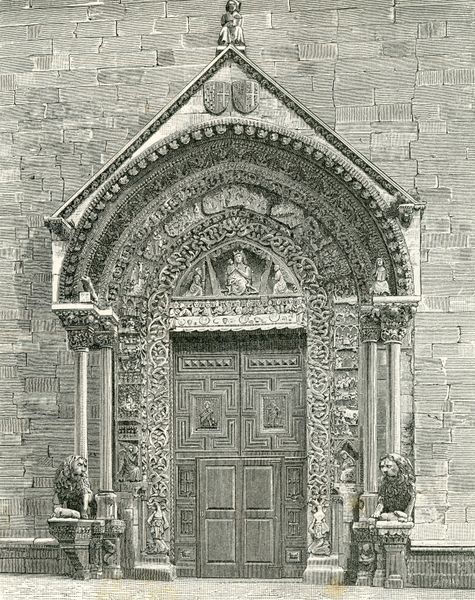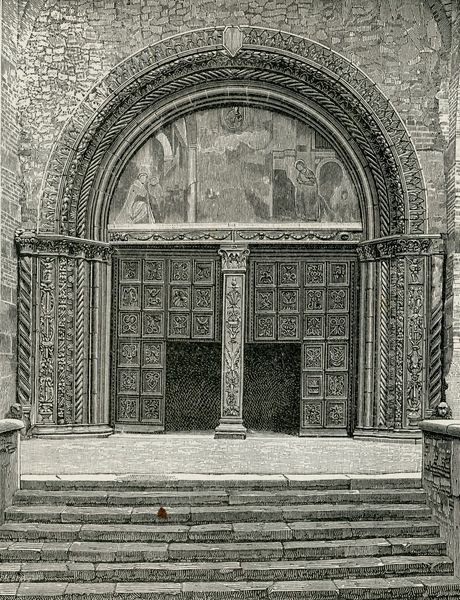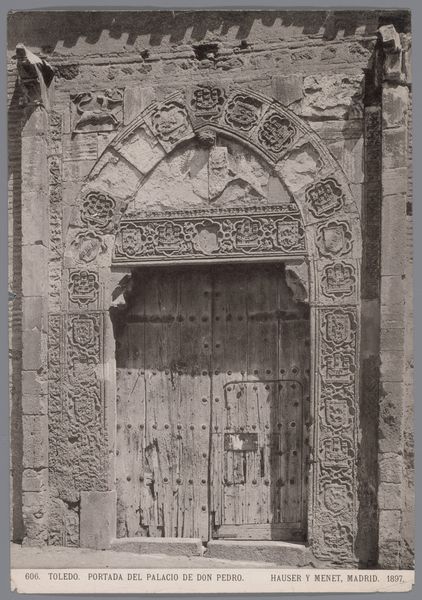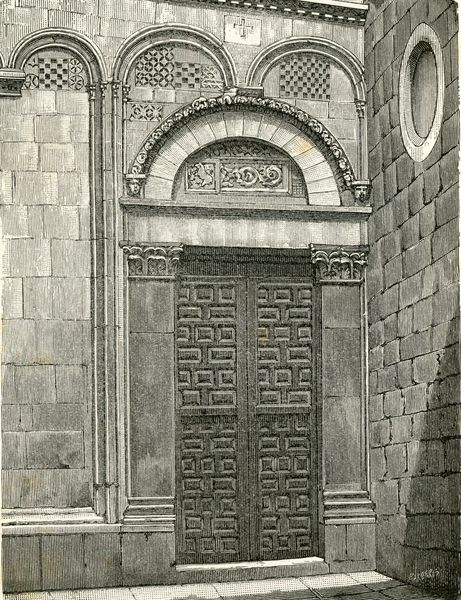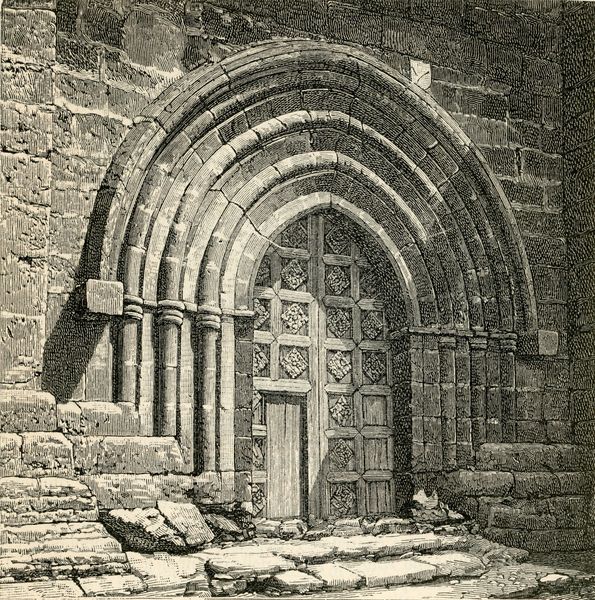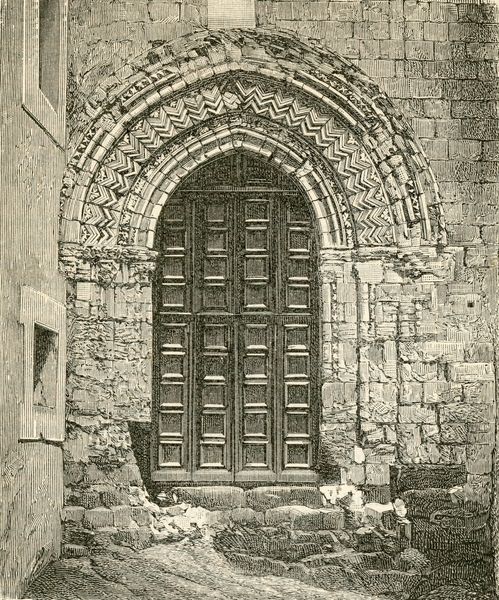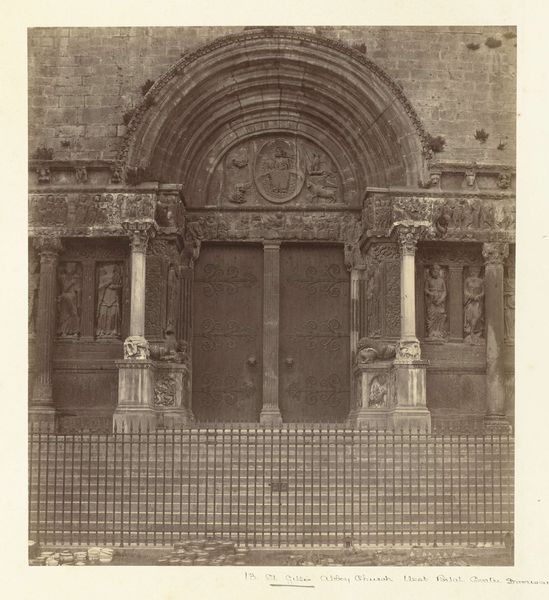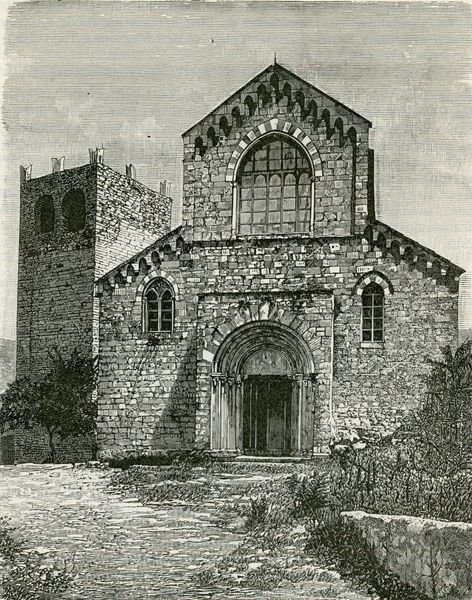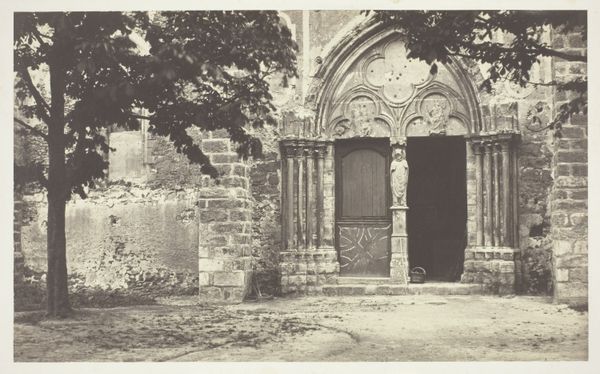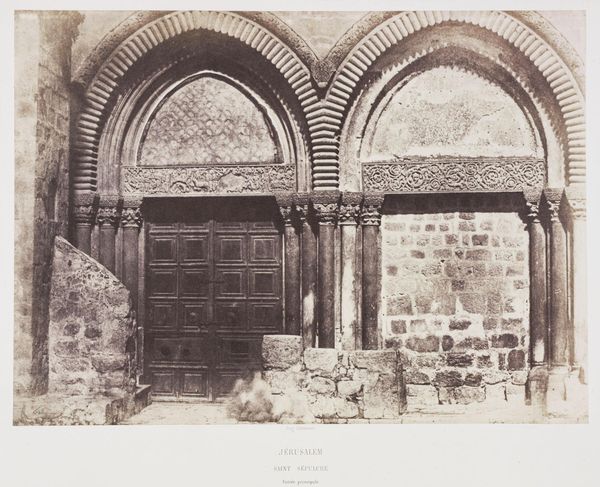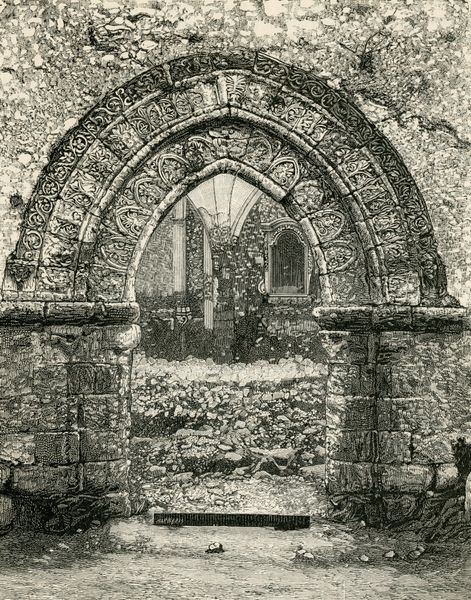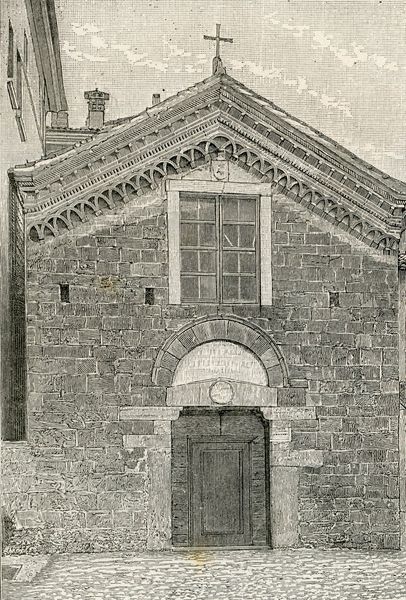
drawing, engraving, architecture
#
drawing
#
medieval
#
historic architecture
#
form
#
geometric
#
architectural drawing
#
line
#
architecture drawing
#
engraving
#
architecture
Copyright: Public domain
Giuseppe Barberis made this engraving of the Porta Della Chiesa Di Sant’agostino in Italy in the late 19th or early 20th century. We can appreciate it as an exercise in architectural documentation, but also consider the status of the Church and the historical weight it carried. The Catholic church shaped the economic, social and cultural life of Italy for centuries, and we see here, in the formal, patterned design of the doorway, a visual assertion of authority. Note how the doorway depicts Jesus Christ with two Saints – this visual code was instantly readable for most Italians. But in the late nineteenth century, the Church's cultural dominance was under threat. The Risorgimento, the unification of Italy, created a new State that challenged the Church’s traditional powers. Barberis’ engraving should be understood as a self-consciously conservative image, a nostalgic view of a past that was quickly disappearing. By studying 19th century publications about Italian society, we can learn more about the changing relationship between Italian society, its institutions, and the place of art.
Comments
No comments
Be the first to comment and join the conversation on the ultimate creative platform.
